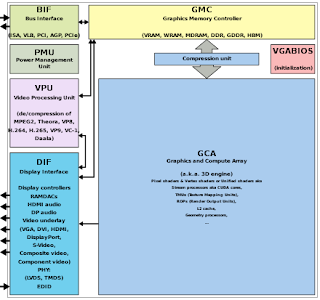graphics processing unit (GPU)


Decomposition of an IPv4 address from dot-decimal notation to its binary value
An IPv4 address has a size of 32 bits, which limits the address space to 4294967296 (232) addresses. Of this number, some addresses are reserved for special purposes such as private networks (~18 million addresses) and multicast addressing (~270 million addresses).
IPv4 addresses are usually represented in dot-decimal notation, consisting of four decimal numbers, each ranging from 0 to 255, separated by dots, e.g., 172.16.254.1. Each part represents a group of 8 bits (an octet) of the address. In some cases of technical writing,[specify] IPv4 addresses may be presented in various hexadecimal, octal, or binary representations.
In the early stages of development of the Internet Protocol, the network number was always the highest order octet (most significant eight bits). Because this method allowed for only 256 networks, it soon proved inadequate as additional networks developed that were independent of the existing networks already designated by a network number. In 1981, the addressing specification was revised with the introduction of classful network architecture.[2]
Classful network design allowed for a larger number of individual network assignments and fine-grained subnetwork design. The first three bits of the most significant octet of an IP address were defined as the class of the address. Three classes (A, B, and C) were defined for universal unicast addressing. Depending on the class derived, the network identification was based on octet boundary segments of the entire address. Each class used successively additional octets in the network identifier, thus reducing the possible number of hosts in the higher order classes (B and C). The following table gives an overview of this now-obsolete system.
Comments
Post a Comment